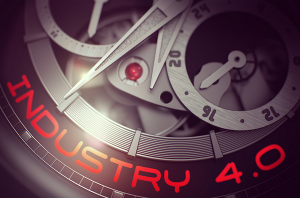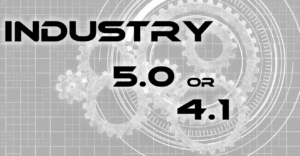The novel coronavirus outbreak demonstrates how interconnected the world has become and how fragile global supply chains can be. A report published by PwC states, “As the crisis evolves, complexities and vulnerabilities in global supply chains, which extend beyond China’s central role in manufacturing and goods trade, are coming to the fore. … While it’s too soon to say whether large-scale sustained adjustments will be made, given the extreme labor cost arbitrage, the change in sentiment caused by COVID-19 is striking and worth watching. When asked whether they are considering changing the breadth of their supply chain as a result of the virus, the percentage of respondents who say they don’t expect to make any changes dropped from 52% to 31%. US businesses have had to contend with a number of supply disruptions in the past three years, including escalations in US-China tariffs and a spate of natural disasters. This crisis may be a tipping point for what’s likely going to be a strategic shift in where supply is sourced and products are assembled.”[1] Part of the anticipated shift in global supply chains is re-shoring or near-shoring of manufacturing and an acceleration of the smart factory (aka Factory of the Future) trend. As Tom Muth, a DELMIA Industry and Roles Portfolio Director, explains, “While most people are staying home during the COVID-19 pandemic, many are on the front line [including] manufacturers who are essential to society and doing their part helping to stop the global pandemic. These manufacturers are on the factory floor continuing to build, construct, create and prepare. Their need is urgent and the vision for a better tomorrow continues. That vision begins with the factory of the future.”[2]
Is Industry 4.0 evolutionary or revolutionary?
Jamie Hinton (@jamiehinton), Razor founder and CEO, explains, “The thinking around industry 4.0 was based on the complete automation of manufacturing facilities using vast amounts of data, robotics, AI and machine learning. It refers to a fourth industrial revolution, focusing on the digitization and networking of new technologies to create value. The previous three revolutions were based on groundbreaking new technology, from steam power to the widespread availability of electricity to run mass assembly lines and even the microprocessor. Each of these technologies spawned new and imaginative business models.”[3] Hinton isn’t so sure what’s taking place is a revolution. He asserts, “What’s happening today isn’t industry 4.0 — it’s an evolution of the digital revolution that started in the 1950s.” He’s not alone in his thinking. Elhay Farkash (@ElhayfLightapp), CEO of Lightapp, agrees Industry 4.0 is more evolutionary than revolutionary. He also believes Industry 4.0 is currently more hype than reality. He writes, “The term provides marketers a framework to reposition some technologies that are getting a bit long in the tooth, while the real transformation has yet to happen.”[4] He explains:
“Discussions around the Fourth Industrial Revolution, or Industry 4.0, began six or seven years ago. … Unfortunately, there are a couple of problems with this current vision of Industry 4.0. … First, the conversations are being led by marketing departments to provide a new spin on current capabilities around IoT: smart sensors, cloud, augmented reality, virtual reality, and artificial intelligence. Not one of these are new. The roots of IoT date back to 1982. Cloud, as a means of distributed computing, started to gain traction in the early 1990s. Funding for government-related AI projects began in the 1960s. … Second, the previous three revolutions were each based on a single groundbreaking new technology. Steam power. The widespread availability of electricity to run mass assembly lines. The microprocessor. Take away any one of these specific technologies and that Industrial Revolution doesn’t happen. More importantly, each of these technologies instantly spawned new and imaginative business models. That’s the revolution part.“
Although the connection to the last revolution is strong and Industry 4.0 involves a combination of existing technologies, concluding a revolution isn’t underway may be a bit shortsighted. Innovation often occurs when existing technologies are combined in a new way and it often takes a combination of events to create the right conditions for a revolution. I believe that’s what’s happening now. A number of technologies are converging to create conditions ripe for the next industrial revolution. Revolutions cause dramatic change. Business as usual is often not possible following a revolution. Most business analysts today insist companies organized around Industrial Age principles (e.g., siloed departments and databases) need to transform into Digital Age enterprises to survive. Transformation is defined as a thorough or dramatic change in form or appearance. That sounds pretty revolutionary to me. Whether you believe Industry 4.0 is evolutionary or revolutionary, change is coming.
AI and Industry 4.0
Artificial intelligence (mostly in the form of machine learning or cognitive computing) is probably the most-mentioned technology associated with Industry 4.0. Although Farkash traces AI back to the 1960s, the technology emerged from a period of stagnation (thanks to big data) to blossom into a vibrant and growing economic powerhouse. Rob Thomas, General Manager of IBM Data and AI, believes AI is creating a revolution of its own as well as powering Industry 4.0. He writes, “The major drivers of this revolution are the same ones that helped propel the original Industrial Revolution: language, automation and trust. Forged in factories of the mid-18th century, all three forces are playing a unique role in tempering AI for widespread use today.”[5] One of the challenges businesses are facing during the novel coronavirus pandemic is keeping a long-term vision. Muth insists long-term visions in mind remains critical. He explains, “Most manufacturers have started some sort of digital transformation initiative to achieve their vision of the factory of the future. Some are at the beginning of this journey and some are well underway. Where to begin and what to focus on depends largely on your overall business goals and current state of digitization. Having a long-term vision is just as important as is understanding where your organization currently stands.”
The Industry 4.0 revolution requires integrating technologies in a new way. In addition to AI, cognitive computing, and machine learning, technologies most often discussed in relation to Industry 4.0 include the Internet of Things (IoT), edge computing, cloud services, additive manufacturing (aka 3D printing), and blockchain. Hinton notes, “When the revolution does arrive, it will not just connect a single manufacturing facility, but the entire manufacturing value chain. The ability to instantly analyze large amounts of data will connect dots across the entire value chain, from suppliers to consumers. Data on how, when, where and why a product is consumed will be communicated back through every part of the value chain and influence every decision in the manufacturing process, automatically.” Even Farkash agrees change is coming. “Industry 4.0 is coming,” he writes, “and when it does, it will be more than a marketing pitch. There are a few missing ingredients required to end the string of sequels and create the next manufacturing revolution. … What we don’t have is the creation of new business models. We’re on the cusp of progress we have yet to imagine. When we do, that’s when we’ll know Industry 4.0 has arrived.”
Concluding thoughts
Thomas concludes, “Like the earlier Industrial Revolutions, which sparked tremendous economic activity across manufacturing, commerce, transportation and more, the AI Revolution can drive a new wave of growth. PwC has estimated that AI has the potential to contribute about $16 trillion to the global economy by 2030. And like the revolutions before it, this one can help change the world — again — thanks in large part to tremendous advances in automation, language and trust.” The novel coronavirus pandemic may delay reaching predicted goals, but it won’t stop those goals from eventually being achieved. Hinton concludes, “While the hype of industry 4.0 has helped light a spark that’s driving the world towards industrial connectivity, a grounded and truly integrated approach is essential to getting the most value out of things such as remote maintenance and predictive analysis in the interim.”
Footnotes
[1] Staff, “PwC’s COVID-19 CFO Pulse Survey,” PwC, 30 March 2020.
[2] Tom Muth, “The Journey to the Factory of the Future,” The DELMIA Blog, 1 April 2020.
[3] Jamie Hinton, “Is Industry 4.0 Just A Hype?” Manufacturing & Logistics IT, 14 March 2020.
[4] Elhay Farkash, “Industry 4.0: Don’t Believe the Hype, Yet,” IndustryWeek, 1 November 2019.
[5] Rob Thomas, “How AI is Driving the New Industrial Revolution,” IBM Think Blog, 19 March 2020.





